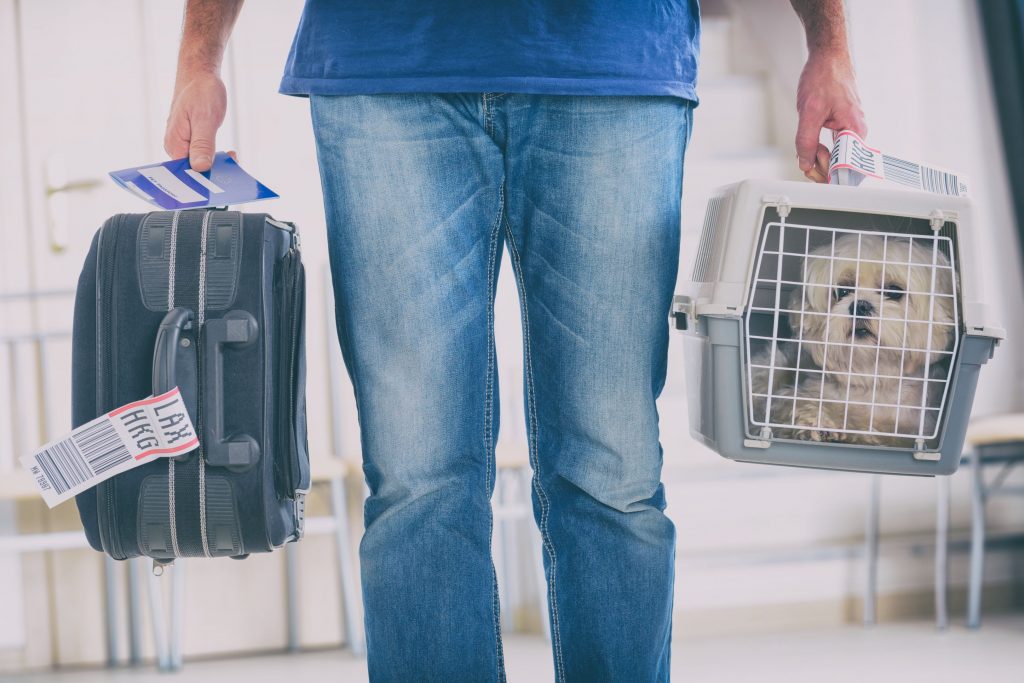Holiday Getaway: Air Traveling With Pets

If you’re planning to fly the friendly skies this holiday season with your cat or dog, our team has some helpful hints and recommendations to give you peace of mind and ensure the safety and wellbeing of your pet.
Health Comes First
Before jet-setting away with your pet, your first destination should be our veterinary clinic for a thorough wellness and preventive care exam. You want your pet to be healthy and properly protected from communicable diseases and parasites he might encounter in new surroundings. Additionally, we can issue a pet health certificate if your airline requires it.
What is a Pet Health Certificate?
Most airlines (and all international flights) require a pet health certificate for those flying with a pet. A pet health certificate is a document signed by a veterinarian verifying that your pet meets the vaccine and testing requirements for air travel. Documentation requirements vary by airline and can change without notice, so always contact the airline for specific information.
Flying With a Dog
It’s important to contact your airline as soon as possible regarding their pet policy. Regulations and requirements vary by airline—and even by destination. If you’re flying with a dog, here are some things to keep in mind:
- Know the airline’s vaccination and documentation requirements.
- Seek out nonstop flights.
- Confirm ahead of time if your dog is small enough to ride with you in the cabin or if he must travel in the cargo hold.
- Be sure you have an airline-approved pet carrier.
- Air travel is dangerous for snub-nosed breeds like bulldogs and pugs, and for this reason, they might be banned from flying in the cargo hold.
- So-called “bully breeds” (like pit bulls) may not be permitted at all on the airline.
Flying With a Cat
When traveling on a plane with a cat, be sure to understand the airline’s pet policy and health requirements, and keep the following considerations in mind:
- Most cats are small enough to fly in the cabin, but confirm ahead of time the exact dimensions of the space under the seats and the weight limit.
- Be sure your cat is traveling in an airline-approved carrier. Choose a soft-sided carrier if possible so you’ve got more “wiggle room” under the seat.
- You may need to sign a waiver if you’re traveling with a brachycephalic breed like a Persian since they are more prone to breathing problems.
Because pet safety is a number one priority when flying with a pet, weigh the pros and cons of traveling with your pet on a plane. If it’s essential that you take your dog or cat with you, our team at BEEVET Animal Hospital is here to help any way we can. Please
contact us if you have questions about flying with a pet.
